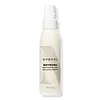What's inside
What's inside
 Key Ingredients
Key Ingredients

 Benefits
Benefits

 Concerns
Concerns

 Ingredients Side-by-side
Ingredients Side-by-side

Water
Skin ConditioningPanthenol
Skin ConditioningNiacinamide
SmoothingSodium Hyaluronate
HumectantCarica Papaya Fruit Extract
Skin ConditioningRosa Canina Fruit Extract
AstringentOrchis Morio Flower Extract
SoothingBrassica Oleracea Italica Extract
AstringentCucumis Sativus Fruit Extract
EmollientOlea Europaea Leaf Extract
PerfumingPrunus Amygdalus Dulcis Fruit Extract
Skin ConditioningRosmarinus Officinalis Leaf Extract
AntimicrobialSpinacia Oleracea Leaf Extract
Skin ConditioningCitrullus Lanatus Fruit Extract
Skin ConditioningLithium Magnesium Sodium Silicate
AbsorbentPolyurethane-14
Amp-Acrylates Copolymer
Aminomethyl Propanol
BufferingCitric Acid
BufferingTetrasodium Glutamate Diacetate
Polysorbate 20
EmulsifyingButylene Glycol
HumectantPropylene Glycol
HumectantGlycerin
HumectantEthylhexylglycerin
Skin ConditioningPotassium Sorbate
PreservativeChlorphenesin
AntimicrobialBenzoic Acid
MaskingSorbic Acid
PreservativeAlcohol
AntimicrobialPhenoxyethanol
PreservativeParfum
MaskingHydroxycitronellal
PerfumingLimonene
PerfumingCitral
PerfumingLinalool
PerfumingWater, Panthenol, Niacinamide, Sodium Hyaluronate, Carica Papaya Fruit Extract, Rosa Canina Fruit Extract, Orchis Morio Flower Extract, Brassica Oleracea Italica Extract, Cucumis Sativus Fruit Extract, Olea Europaea Leaf Extract, Prunus Amygdalus Dulcis Fruit Extract, Rosmarinus Officinalis Leaf Extract, Spinacia Oleracea Leaf Extract, Citrullus Lanatus Fruit Extract, Lithium Magnesium Sodium Silicate, Polyurethane-14, Amp-Acrylates Copolymer, Aminomethyl Propanol, Citric Acid, Tetrasodium Glutamate Diacetate, Polysorbate 20, Butylene Glycol, Propylene Glycol, Glycerin, Ethylhexylglycerin, Potassium Sorbate, Chlorphenesin, Benzoic Acid, Sorbic Acid, Alcohol, Phenoxyethanol, Parfum, Hydroxycitronellal, Limonene, Citral, Linalool
Water
Skin ConditioningVinyl Dimethicone/Methicone Silsesquioxane Crosspolymer
Acrylates Copolymer
Pentylene Glycol
Skin ConditioningPvp
Emulsion StabilisingPolyglyceryl-10 Myristate
Skin ConditioningNiacinamide
SmoothingBakuchiol
AntimicrobialLens Esculenta Seed Extract
Skin ProtectingHamamelis Virginiana Leaf Extract
Skin ConditioningXanthan Hydroxypropyltrimonium Chloride
HumectantSodium Hyaluronate
HumectantButylene Glycol
HumectantEthylhexylglycerin
Skin ConditioningSodium Dehydroacetate
PreservativePhenoxyethanol
PreservativeWater, Vinyl Dimethicone/Methicone Silsesquioxane Crosspolymer, Acrylates Copolymer, Pentylene Glycol, Pvp, Polyglyceryl-10 Myristate, Niacinamide, Bakuchiol, Lens Esculenta Seed Extract, Hamamelis Virginiana Leaf Extract, Xanthan Hydroxypropyltrimonium Chloride, Sodium Hyaluronate, Butylene Glycol, Ethylhexylglycerin, Sodium Dehydroacetate, Phenoxyethanol
Ingredients Explained
These ingredients are found in both products.
Ingredients higher up in an ingredient list are typically present in a larger amount.
Butylene Glycol (or BG) is used within cosmetic products for a few different reasons:
Overall, Butylene Glycol is a safe and well-rounded ingredient that works well with other ingredients.
Though this ingredient works well with most skin types, some people with sensitive skin may experience a reaction such as allergic rashes, closed comedones, or itchiness.
Learn more about Butylene GlycolEthylhexylglycerin (we can't pronounce this either) is commonly used as a preservative and skin softener. It is derived from glyceryl.
You might see Ethylhexylglycerin often paired with other preservatives such as phenoxyethanol. Ethylhexylglycerin has been found to increase the effectiveness of these other preservatives.
Niacinamide is a multitasking form of vitamin B3 that strengthens the skin barrier, reduces pores and dark spots, regulates oil, and improves signs of aging.
And the best part? It's gentle and well-tolerated by most skin types, including sensitive and reactive skin.
You might have heard of "niacin flush", or the reddening of skin that causes itchiness. Niacinamide has not been found to cause this.
In very rare cases, some individuals may not be able to tolerate niacinamide at all or experience an allergic reaction to it.
If you are experiencing flaking, irritation, and dryness with this ingredient, be sure to double check all your products as this ingredient can be found in all categories of skincare.
When incorporating niacinamide into your routine, look out for concentration amounts. Typically, 5% niacinamide provides benefits such as fading dark spots. However, if you have sensitive skin, it is better to begin with a smaller concentration.
When you apply niacinamide to your skin, your body converts it into nicotinamide adenine dinucleotide (NAD). NAD is an essential coenzyme that is already found in your cells as "fuel" and powers countless biological processes.
In your skin, NAD helps repair cell damage, produce new healthy cells, support collagen production, strengthen the skin barrier, and fight environmental stressors (like UV and pollution).
Our natural NAD levels start to decline with age, leading to slower skin repair, visible aging, and a weaker skin barrier. By providing your skin niacinamide, you're recharging your skin's NAD levels. This leads to stronger, healthier, and younger looking skin.
Another name for vitamin B3 is nicotinamide. This vitamin is water-soluble and our bodies don't store it. We obtain Vitamin B3 from either food or skincare. Meat, fish, wheat, yeast, and leafy greens contain vitamin B3.
The type of niacinamide used in skincare is synthetically created.
Learn more about NiacinamidePhenoxyethanol is a preservative that has germicide, antimicrobial, and aromatic properties. Studies show that phenoxyethanol can prevent microbial growth. By itself, it has a scent that is similar to that of a rose.
It's often used in formulations along with Caprylyl Glycol to preserve the shelf life of products.
Sodium Hyaluronate is hyaluronic acid's salt form. It is commonly derived from the sodium salt of hyaluronic acid.
Like hyaluronic acid, it is great at holding water and acts as a humectant. This makes it a great skin hydrating ingredient.
Sodium Hyaluronate is naturally occurring in our bodies and is mostly found in eye fluid and joints.
These are some other common types of Hyaluronic Acid:
Learn more about Sodium HyaluronateWater. It's the most common cosmetic ingredient of all. You'll usually see it at the top of ingredient lists, meaning that it makes up the largest part of the product.
So why is it so popular? Water most often acts as a solvent - this means that it helps dissolve other ingredients into the formulation.
You'll also recognize water as that liquid we all need to stay alive. If you see this, drink a glass of water. Stay hydrated!
Learn more about Water